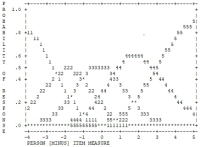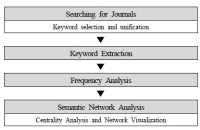PURPOSE This study aimed to categorize consumers’ subjectivity on public value of citizen professional football club. METHODS Q-sample and Q-classification charts were developed based on theoretical background of the public value of citizen football clubs, and in-depth interviews with consumers were conducted using the Q-methodology. Q-classification and Q-factor analyses were conducted by selecting local residents as P-samples. RESULTS The public value of citizen football clubs was confirmed as ‘Type I: club-city win-win’, ‘Type II: social integration’, and ‘Type III: culture-led’. These types are contrary to previous studies that mainly focused on management and marketing, such as financial profitability and soundness, regional economic impact, and commercial value. This is the result of examining the public value of the citizen football club from based on the subjectivity of consumer, and it differs from that in previous studies. CONCLUSIONS This study reconfirmed the specificity and role of citizen football clubs in commercialized professional sports. It showed that citizen clubs must adopt organizational goal and operation method that are different from profit sports organizations (clubs).
PURPOSE This study aimed to identify movement pattern differences in the running of youth soccer players with and without lateral ankle sprain (LAS) histories. METHODS A total of 12 participants were recruited and assigned to the LAS group or the control group. All participants were assessed for anthropometric data, and they filled in the subjective ankle function questionnaires. Then, reflective markers were attached to their bodies, and they were instructed to run at the preferred speed on the 9-m runway thrice. 3D joint angles for ankle, knee, and hip joints were exported, and their mean values and 95% confidence intervals were calculated. Ensemble curve analysis was conducted to compare running kinematics between the groups. RESULTS The LAS group exhibited fewer dorsiflexion angles and more inversion angles compared to the control group. Excluding the dorsiflexion deficits and more inverted ankles, there were no significant differences between the groups. CONCLUSIONS Although the ankle kinematic patterns found in this paper are not considered LAS risk factors, it will be able to identify precise LAS risk factors with prospective design (e.g., lower extremity movement patterns) as well as intrinsic risk factors.
This study aims to provide an in-depth study on K-League players' perception and preparation process on retirement. In order to achieve the purpose, data collection was conducted in two major ways; face-to-face interviews and questionnaires from 10 currently working players. The result of study is based on inductive analysis. First of all, sense of expectation and concern, limited scope of secondary job, and necessity for career education are appeared in terms of players' perception. Second, preparation process on retirement is concluded in two categories; personal development activities(non-professional and inefficiency) and financial preparation. Thirdly, difficulties in the procedures of retirement preparation are categorized into ‘limited time and isolated lifestyle caused by staying in club house ’ and ‘lack of educational programs regarding retirement’. Depending on the results of this study, opportunities confined to retired players are supposed to be enlarged to currently working players. In addition, football club and K-League federation need to support players not only to enhance performance but also to prepare retirement.
Purpose The purpose of this study is to analyze the changes in the game factors since the introduction of the VAR system and discuss the meaning of the changes in the K-League. Methods The game factors related to referee decisions (goal, penalty kick, offside, foul, yellow card, red card, additional time) were divided into home and away team and analyzed by two-way ANOVA for 556 games before and 583 games after the VAR system was implemented. All game factors that occurred during the match and additional time were analyzed as independent t-test before and after the implementation of the VAR system. Results First, there was no statistically significant difference between a goal and a penalty kick. Second, the offside was significantly reduced throughout the home team, away team and the entire game(p<.001). Third, fouls were significantly reduced in home teams, away teams and the entire game (p<.01). Fourth, yellow cards were significantly reduced in both home and away teams and the entire game(p<.001). The red card increased significantly throughout the home team, away team, and the entire game(p<.001). Sixth, the additional time showed no difference the first half and the entire game, and was a little reduced in the second half (p<.05). Conclusions As a result of this study, players should not anticipate offside decision and stop playing in critical situations that may lead to a score or penalty kick, and continue playing until the referee makes a final decision. In addition, all red card situations are review through the VAR system, so excessive foul play or unnecessary behavior should be avoided. K-League referees are required to make a more accurate decision in the red card situation, and the time wasted by the VAR system during the game is not much.
PURPOSE The purpose of this study is to explore the effects of the student-athlete and student peer mentoring program as a collegiate class. METHODS The peer mentoring program, conducted at A University in the first semester of the 2023 school year, was evaluated using practical action research (Zuber-Skeritt, 1996). RESULTS In the introduction stage, ‘relative and absolute evaluation’, ‘member ratio’, and ‘definition of professor role’ were categorized as challenge issues. In the progress stage, ‘de-formalized lecture method’, ‘student athlete’s coaching experience’, and ‘student’s experience of football culture’ were discovered as possibilities, while ‘vacancy and absence of mentor-mentee’, ‘limited group activities and limitations of team sports’, and ‘lack of objective evaluation’ required improvement. At the end stage, student-athletes experienced changes in values such as self-identity, football, and human relationships, as well as quantitative and qualitative changes in sports participation. CONCLUSIONS This study confirmed the potential of the peer mentoring program as a collegiate class as well as its practical significance for guaranteeing student-athletes' learning rights and for forming sports culture on collegiate campuses.
The purpose of this study is to analyze relationship between game result and foul, yellow card, red card, penalty kick in soccer match. For the study, the sample used corresponded to 2,654 matches from the 2005 season to the 2014 season of the Korean Professional football League. One-way ANOVA and frequency analysis was used to elucidate the relationship between game result and each element. The results were as follows. First, it was more foul when both home team and away team win the game. Second, home team received more yellow card when home team win the game. Third, it received less red card when both home team and away team win the game. Fourth, home team got more penalty kick when home team win the game.
PURPOSE This study both validated the Characteristics of Resilience in Sports Teams Inventory (CREST) scale for use in Korean sports and analyzed the impact of team resilience on teamwork and performance. METHODS The study surveyed 462 elite football players by using the CREST scale to measure team resilience in Korean sports. Data were analyzed using descriptive statistics, exploratory factor analysis (EFA), reliability analysis, correlation analysis, multiple regression analysis, and confirmatory factor analysis (CFA). RESULTS First, results confirmed that the CREST scale’s two main factors—resilient characteristics and vulnerabilities under pressure—can be meaningfully applied in the Korean context. Second, resilient characteristics showed positive correlation with life skills, whereas vulnerabilities under pressure showed negative correlation. Third, resilient characteristics positively predicted life skills, whereas vulnerabilities under pressure negatively affected life skills. CONCLUSIONS The CREST scale was found reliable and valid in the Korean sports context, demonstrating that team resilience significantly impacts life skills. Thus, the study contributes to evaluation of resilience in Korean sports teams and provides strategicinsights to improve team performance.

Purpose The purpose of this study was to determine item goodness-of-fit and the optimal categorization of an instrument measuring Korean elite young soccer player’s self-esteem using a two-facets Rasch model (item parameters and person parameters). Methods 10-item Rosenberg Self-Esteem Scale (RSES) with five response categories was administered to 366 elite young soccer players from the Korea football association. The Rasch analysis was conducted by WINSTEPS 3.65. Results First, the model fit the data well. Second, 5-category rating scale did function well. Third, a item-person map illustrated the distribution of RSES items and person’s level of self-esteem. Fourth, the separation reliability of the items and person was shown to be an acceptable degree of confidence, respectively. Lastly, there was statistically significant difference in self-esteem between starting players and bench players, which supported the known-difference evidence of validity. Conclusion These findings provided additional support for the suitability of the RSES in assessing self-esteem of Korean elite young soccer players.




[Purpose] The purpose of this study was to identify research trend regarding pro-sports and visualize keyword network by using semantic network analysis. [Methods] After searching researches about pro-sports from 1994 to 2016, total 686 researches selected. In this process, inappropriate researches were excluded by 2 researchers’ consensus. [Results] First, the distribution of the number of researches were arranged on pro-baseball, pro-football, pro-basketball, and pro-volleyball in that order. Second, fan, team, and athletes were main research subject. Third, quantitative researches were dramatically more than qualitative researches and mixed method researches. Forth, the proportion of co-working have increased with the course of time. Fifth, the number of keyword which are appeared in researches has increased with the course of time, it dramatically was increased at 2010. [Conclusion] Through these results, researches regarding pro-sports have been broaden with the course of time and interdisciplinary convergence researches with adjacent fields were performed. However, some keyboards were repeated and academic interest about rare keywords was decreased with the course of time. Therefore, scholars in sports field need to have a inquiring stance about novel variables and phenomenons




This study conducted to explore K-League (Korea Professional Football League) referees’ psychological experience and coping strategies just after the moment of wrong judgment. Open-ended questionnaire were conducted on 35 full-time referees who participated in the K-League winter training camp. The data were categorized by inductive content analysis. The results were as follows. Psychological experience yielded 45 raw data points, which were based on the following 10 sub categories; increased anxiety, rumination wrong judgment, concern about reprimand, and feeling apologetic; and four general categories including, psychological fragmentation, feeling helpless, concern about reputation, and acknowledgment of wrong judgment. Thus, K-league referees experience a psychological turbulence just after the moment of the bad calls and worsen feelings of helplessness about the wrong decisions. Also, K-league referees worry about further disadvantages following the misjudgement and admit their bad calls feeling sorry for teams and athletes who were in the incidents. Coping strategies yielded 55 raw data points from which the following categories were identified 11 sub categories; increasing concentration, attempting to forget wrong judgment, apologizing on wrong judgment, and change in thinking; and four general categories including, emotional self-support, avoiding situation, correcting the error and thinking, and changing of refereeing approach. Therefore, K-league referees enhance their concentration in order to not reoccur wrong judgement after the moment of the mistakes and try to forget the incidents of wrong judgement. Also, K-league referees apology to the teams and athletes who experienced the bad calls and make efforts to correct the mistakes if possible. Moreover, K-league referees try to modify a criteria of judgement in order to manage aftereffects of wrong judgement and make decisions correctly by approaching the scenes of the wrong judgement. The study emphasizes the importance of referee psychological stability on the field and the need for psychological support. The study is expected to encourage further research on sports referees in Korea to ensure they receive appropriate psychological support.